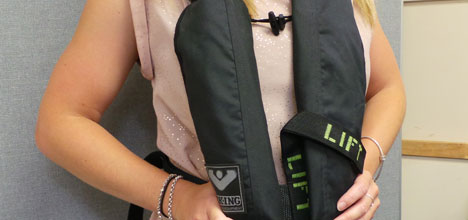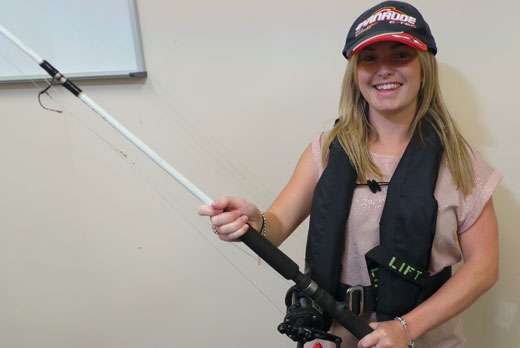Harbourmasters in the Bay of Plenty are urging boaties to ensure their inflatable life jackets are in good working order during the summer season.
'Regular maintenance of inflatable life jackets is essential – there have been drownings in other parts of New Zealand due to life jackets failing to inflate and that's not something we want to see happening,” says Bay of Plenty Regional Council maritime operations manager Reuben Fraser.
Lifejackets should be in working order. Photo:Andrew Campbell.
'Water users today have a great choice of personal floatation devices (PFD) and many people opt for the inflatable types because they are light and easy to wear and don't take up much vessel storage space.
'However, it is very important they are checked regularly and that every second year they are taken to a professional service agent for full servicing.”
People can conduct a service check themselves but for a full professional service, inflatable life jackets need to be taken to a life jacket service agent.
'There is a cost involved in having life jackets checked and fully serviced but you can't put a price on saving a life."
It is not mandatory to wear life jackets in the Bay of Plenty but a correctly fitting PFD for every person on board must be stowed aboard vessels, including on jet skis and paddle boards on flat water, in case of emergency.
Regional Council maritime staff are heartened by the number of people who do choose to wear a life jacket when they're out on the water – but they can only save the life of the person wearing them if they are in proper working order.
'We want people to enjoy their time on and in the water and to do so safely. Incidents and accidents can and do happen at any time, not always due to anyone doing anything wrong – ensuring your equipment is up to scratch and you know what to do if something goes wrong will minimise the risks and the chances of a tragedy," says Reuben.
Tips for your annual life jacket check
- Rinse the jacket in fresh water, particularly if it has been used around salt water. If the cover has oil or dirt on it, use warm soapy water to clean it. If it's an auto inflate model, remember to remove the plunger cap and water soluble bobbin first, so that it doesn't self-inflate when you wash it.
- Check the bladder by inflating orally and leaving overnight. If the bladder leaks, return it to an approved service agent. Deflate by inverting the cap on the oral inflation tube and pressing it gently.
- Unscrew the CO2 cylinder and check it for rust or corrosion; also check that the nozzle hasn't been punctured by the firing needle. Once the CO2 cylinder has been used, it has to be replaced – you can't refill them.
- For manual lifejackets, check that the firing pin works, by pulling the inflate cord.
- Most automatic jackets will have a dissolving bobbin – check that it is in place and that it's not more than 4 years old. Some automatic types have an automatic inflation mechanism or cartridge that will have an expiry date printed on it.
- Make sure the coloured retainer clip on the firing mechanism is in place, to prevent accidental inflation. Check that the sealing washer is in good condition.
- Screw the CO2 cylinder back in place; then hand tighten it until firm.
- Replace firing bobbin at least every three years; or more often if it is used frequently.
- Check webbing and stitching for abrasion. Check whistle and reflective tape is clean and in good order. Check light is working if your PFD has one attached.
- Make sure the jacket is thoroughly dry before repacking. Repack the bladder by folding ‘concertina' fashion (not rolling) and zip up or Velcro the cover. Make sure that the pull toggle is accessible
General tips
- Check with your supplier when purchasing a new PFD on how to service and what to look for.
- Gas cylinders are ‘dangerous goods' and should be kept away from children.
- Do not use your life jacket as a cushion or pillow.
- Remember to firmly fasten the crotch strap on your life jacket, if you have to jump into the water from a height, hold tightly onto your life jacket so it does not ride up and cause a neck injury or restrict your breathing.




0 comments
Leave a Comment
You must be logged in to make a comment.